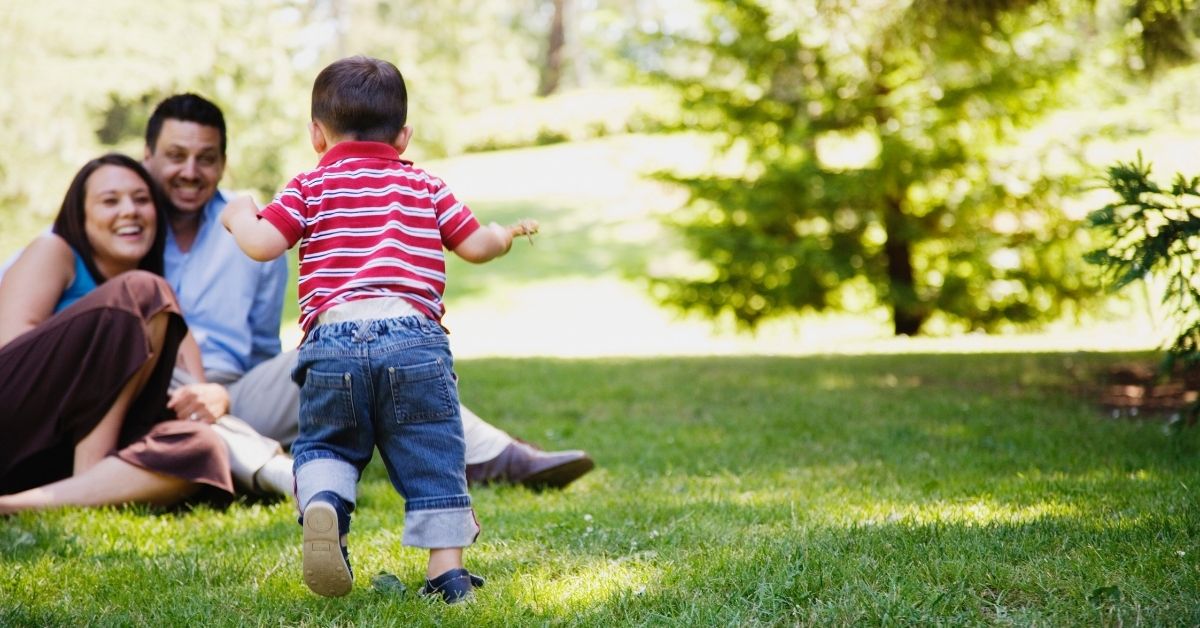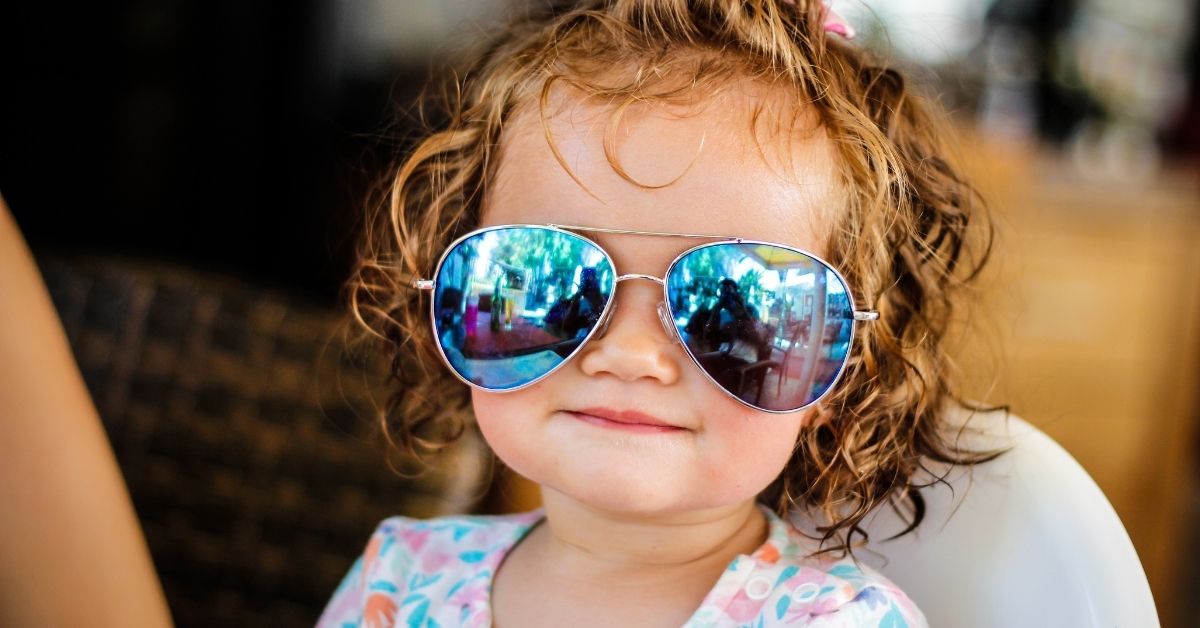what to do when baby cries and holds breath

SUMMARY
Breath-holding spells are short spells of fourth dimension during which a child stops breathing. They are c ommon ly mistaken for seizure south .
Spells usually occur in an otherwise neurologically healthy toddler. The nearly common age for a spell is betwixt 12 and 18 months old. Some children with jiff-holding spells can be younger.
This condition is seen in about ane in 25 children during the outset few years of life.
At that place are two types of breath-belongings spells. Both types may occur in the same child at dissimilar times. They are defined based on the kid'due south colour during the spell:
- Cyanotic Breath-Belongings Spell. A child turns blueish during this type of spell. "Cyanosis" is the medical term for taking on a bluish or purplish tone. This coloring is due to lack of oxygen in the claret.
- Pallid Breath-Holding Spell. A child appears pale rather than blue during this type of spell.
JUMP TO
Disorder Overview
DESCRIPTION/SIGNS & SYMPTOMS
Cyanotic Jiff-Belongings Spells
These are also called:
- Blue breath-holding spells
- Cyanotic infantile syncope
These are the almost common type of breath-property spells. They are seen in more than half of cases.
They are provoked and preceded by crying. Sometimes, the crying is not intense. For instance, cyanotic spells tin be provoked by mild sobbing.
Triggers involve an emotional upset of some kind. An example might be an older sibling taking away a toy.
Emotions can include:
- Fear
- Anger
- Frustration
Sequence of events seen during a cyanotic spell
- Child cries inconsolably and vigorously.
- Child appears to have a deep breath. Child stops breathing during the procedure of releasing air from the lungs. In other words, breathing stops during expiration.
- Child turns blue and passes out. This is likely due to a temporary cut-off of oxygen to the encephalon.
- Child becomes stiff. Kid then might lose muscle tone. Or the kid might show brief, aberrant jerking movements of the limbs. These movements tin be quick or repetitive. This stage may resemble or be mistaken for a seizure.
- As the episode ends, the child takes a deep breath. The kid regains consciousness.
- The child then has a quick render to baseline action. In that location are usually no physical consequences.
A typical spell like this lasts less than a minute.
This is usually simply a respiratory event. It ordinarily does not cause whatsoever change in center charge per unit or rhythm.
Note: These spells are not done on purpose by the child. Crying during a tantrum could provoke a spell. Nevertheless, spells themselves are not self-induced temper tantrums.

Pallid Breath-Holding Spells
These are also called:
- White breath-property spells
- Reflex anoxic seizures
These are a less mutual type of breath-holding spell than cyanotic spells. However, they are more usually mistaken for epileptic seizures.
Syncope is a loss of consciousness, or fainting. Pallid breath-holding spells resemble fainting. They can mimic other kinds of syncope. For instance, they tin look like vasovagal syncope. Vasovagal syncope happens because of an emotional trigger, such equally the sight of blood.
Pallid spells can be caused by a sudden fright. They can also be caused by pain from a relatively fiddling trauma. For instance, a trivial trauma might look like a bump to the head or a fall on the sofa cushion.
Sequence of events during a pallid spell
- Intense crying is absent. A brief, feeble cry exist present.
- Child gasps. Kid then of a sudden turns pale and looks dead. This can be very scary.
- Child can have some extremity jerking. Sometimes aberrant eye movements maybe seen. Caregivers or observers might recall this is an epileptic seizure.
- Kid speedily returns to baseline activity. Tiredness and sleepiness may be seen in some.
These spells may last longer than a minute.
During an assault, the child's pulse slows significantly. This may frighten an observer.
Note: The term "seizure" in reflex anoxic seizure does not make this a true epileptic seizure. It is a syncope (fainting). Seizure-like movements are caused by the loss of oxygen.
Features Similar to Both Spells
Some characteristics are the same in both types of jiff-holding spells. These include:
- Variance. Spells can vary in frequency, severity, intensity, and duration. This can exist truthful even in ane aforementioned kid with recurrent events.
- Recurrence. Spells tin can recur. In some, this tin can happen fifty-fifty on the same day.
- Wakefulness. Spells always occur while a kid is awake.
Breath-Holding Spells Versus True Epileptic Seizures
These spells and epileptic seizures can wait similar. However, there are some important differences.
- Provocation. Breath-holding spells are always provoked. This ways they have a trigger. True epileptic seizures are not always provoked.
- Return to baseline. Returning to baseline ways returning to a child's state earlier the incident. There is a quick return to baseline later on a breath-property spell. There is usually a delayed return to baseline after a true epileptic seizure.
- Color alter. Color modify precedes seizure-like movements in a jiff-holding spell. A child may turn blue only during or afterwards a true epileptic seizure.
- Eyes. Eyes always remain closed in breath-holding spells. Eyes are always open in a true epileptic seizure.
- Wakefulness. Breath-holding spells e'er occur while awake. Truthful epileptic seizures can occur while awake or asleep.

CAUSES
Cyanotic Breath-Holding Spells
The exact mechanism of these is not clearly understood. It is somewhat complex.
Consciousness requires a steady catamenia of blood and oxygen to the brain. This gets interrupted when a child is belongings their breath. As blood and oxygen end flowing to the brain, a kid tin pass out and plough blue.
Pallid Jiff-Holding Spells
These are believed to exist a vasovagal response to pain caused by a relatively picayune trauma. The vagus nerve controls the heart rate. Sometimes information technology is overactivated. This is called a vasovagal response. This overactivation can result in a subtract in the centre charge per unit. A decrease in heart rate tin lead to a reduction in blood and oxygen supply to the brain. This reduction, in turn, can cause a child to lose color and pass out.
Causes Common to Both Types
Sometimes, parents or siblings have as well experienced breath-holding spells. This supports a genetic footing for the condition.
Iron deficiency and iron-deficiency anemia may also be associated with jiff-holding spells.

LABORATORY INVESTIGATIONS
Making a Diagnosis
No laboratory investigations are needed to make an initial diagnosis.
A detailed history of the event and the provoking triggers is enough to make a clinical diagnosis. A detailed history can also help to differentiate breath-holding spells from:
- Epileptic seizures
- Cardiac phenomena, such as syncope or abnormal eye rhythms (arrhythmias)
Video recording the spells with a cellphone camera is another quick and inexpensive manner of arriving at a diagnosis.
Farther Testing
Blood labs are sometimes necessary. A complete blood count and iron report may be done to rule out iron-deficiency anemia.
An electroencephalogram (EEG) is a exam that tin can record brain waves to appraise someone'south risk of having a seizure. An EEG may be ordered in rare cases for events that might be breath-holding spells. They are ordered if:
- The history of an event cannot exist clearly recalled
- The outcome had atypical features
- The event was prolonged
If a jiff-holding spell is captured on an EEG, it does not prove features that are seen during a true epileptic seizure. Instead, it shows transient slowing of the brain waves. This occurs due to a decrease in the blood and oxygen supply to the encephalon during a spell. If an EEG is done outside a spell, largely, it does not show the presence of waveforms that suggest someone perhaps at an increased risk for seizures.
In rare cases, a cardiologist referral may be placed. This tin happen if there are singular features of the spell, or if a cardiac condition is suspected.
T REATMENT AND THERAPIES
No handling is needed for isolated, rare, or infrequent events.
It is important to reassure and counsel parents. They should empathise the benign nature of these spells. Parents may avoid disciplining their child for fearfulness of provoking an issue. Decreasing parents' emotional reaction to the spells allows for historic period-appropriate subject.
Oral iron supplementation tends to improve spells. This helps especially if the kid is iron scarce. Iron is usually given for between ane and iv months.
Extremely severe cases sometimes require a heart pacemaker. A pacemaker is an electrical device used to stimulate or steady the heartbeat. It requires surgery to implant. A pacemaker is used when the spells involve:
- Significant bradycardia. Bradycardia is a decrease in the eye rate beneath what is normal for one'southward age.
- Asystole. Asystole is an arrest of cardiac action (stopping of the middle).
The use of antiseizure medications is almost never recommended for breath-holding spells. This is truthful even in cases where the child shows brief convulsive movements during a spell. In rare cases, a breath-belongings spell may evolve into an actual epileptic seizure. All the same, this typically does not warrant the use of an antiseizure medication.

What to Practise During a Breath-Holding Spell
- Exercise not panic. This is truthful for both parents and onlookers.
- Place the child sideways.
- Ensure the child is in a safe location.
- Avoid picking the child up during a spell. This may prolong the spell.
- Do not perform mouth to mouth breathing or cardiopulmonary resuscitation. Spells are brief, with quick recovery.
LONG TERM
No long-term neurological or wellness bug occur as a consequence of having breath-property spells in babyhood.
At that place is not an increased risk of having epileptic seizures associated with breath-belongings spells. This is true even if the child shows convulsive movements during the spell.
Children with pallid jiff-holding spells equally a toddler may continue to experience vasovagal syncope as they abound older.
In rare cases, children may develop transient or long-term beliefs issues or temper tantrums.
OUTLOOK
Breath-property spells do non harm the kid. Yet, they are very scary for a parent to watch.
They are historic period-dependent which means they are related to encephalon maturity. They resolve over time, usually by 5 to seven years of age.
Children with pallid jiff holding spells may develop vasovagal syncope as adolescents and adults. Again, this is due to an "overactive" vagus nerve.
Overall, outlook is excellent for both types of breath-holding spells.

Research
ClincalTrials.gov for b reath-property spells are clinical trials that are recruiting or volition be recruiting. Updates are fabricated daily, and so you are encouraged to check back ofttimes.
ClinicalTrials.gov is a database of privately and publicly funded clinical studies conducted around the world. This is a resource provided by the U.S. National Library of Medicine (NLM), which is an plant within the National Institutes of Wellness (NIH). Listing a written report does not mean it has been evaluated by the U.S. Federal Government. Please read the NLM disclaimer for details.
Before participating in a report, you are encouraged to talk to your health care provider and acquire about the risks and potential benefits .
The data in the CNF Child Neurology Disorder Directory is non intended to provide diagnosis, treatment, or medical advice and should not be considered a substitute for communication from a healthcare professional. Content provided is for informational purposes only. CNF is not responsible for deportment taken based on the data included on this webpage. Please consult with a physician or other healthcare professional regarding any medical or health related diagnosis or treatment options .
Thanks to our 2022 Disorder Directory partner Jazz Pharmaceuticals. And to our 2021 partners Acadia, Aeglea, Amicus Therapeutics, bluebird bio, Eisai, Greenwich Biosciences (now Jazz Pharmaceuticals), Liva Nova, Origin, Ovid, PTC Therapeutics and UCB for their back up of the Disorder Directory.
Source: https://www.childneurologyfoundation.org/disorder/breath-holding-spells/
0 Response to "what to do when baby cries and holds breath"
Post a Comment